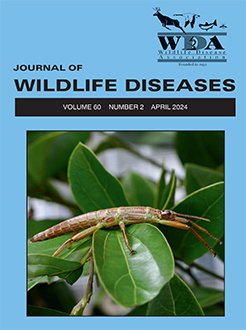Lusajo Mwakibete, Sabrina S. Greening, Katrina Kalantar, Vida Ahyong, Eman Anis, Erica A. Miller, David B. Needle, Michael Oglesbee, W. Kelley Thomas, Joseph L. Sevigny, Lawrence M. Gordon, Nicole M. Nemeth, C. Brandon Ogbunugafor, Andrea J. Ayala, Seth A. Faith, Norma Neff, Angela M. Detweiler, Tessa Baillargeon, Stacy Tanguay, Stephen D. Simpson, Lisa A. Murphy, Julie C. Ellis, Cristina M. Tato, Roderick B. Gagne
Journal of Wildlife Diseases 60 (2), 362-374, (5 April 2024) https://doi.org/10.7589/JWD-D-23-00109

KEYWORDS: Avian, metagenomics, mortality event, rapid response, wildlife
Mass mortality events in wildlife can be indications of an emerging infectious disease. During the spring and summer of 2021, hundreds of dead passerines were reported across the eastern US. Birds exhibited a range of clinical signs including swollen conjunctiva, ocular discharge, ataxia, and nystagmus. As part of the diagnostic investigation, high-throughput metagenomic next-generation sequencing was performed across three molecular laboratories on samples from affected birds. Many potentially pathogenic microbes were detected, with bacteria forming the largest proportion; however, no singular agent was consistently identified, with many of the detected microbes also found in unaffected (control) birds and thus considered to be subclinical infections. Congruent results across laboratories have helped drive further investigation into alternative causes, including environmental contaminants and nutritional deficiencies. This work highlights the utility of metagenomic approaches in investigations of emerging diseases and provides a framework for future wildlife mortality events.

